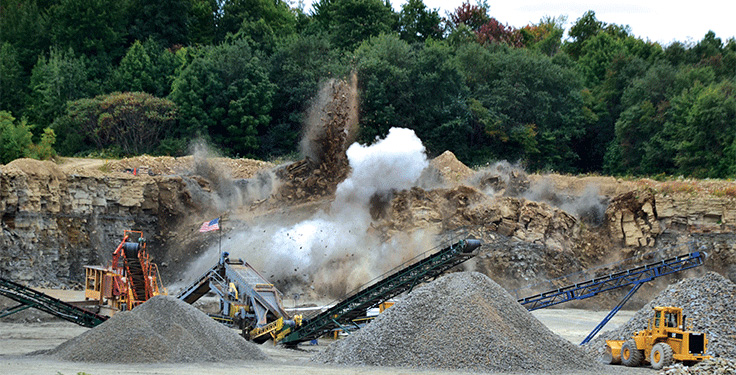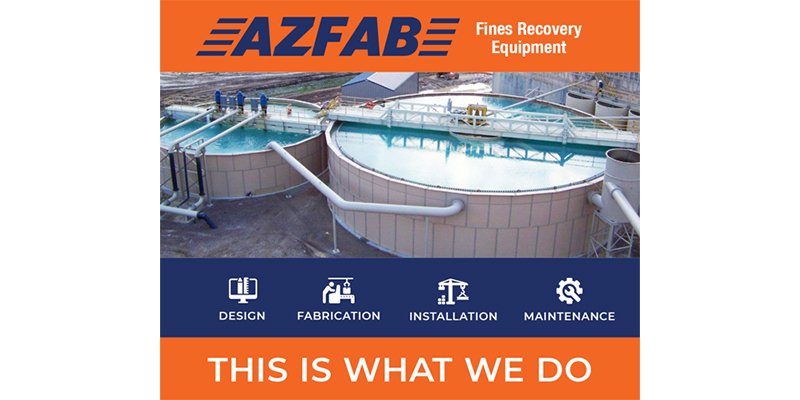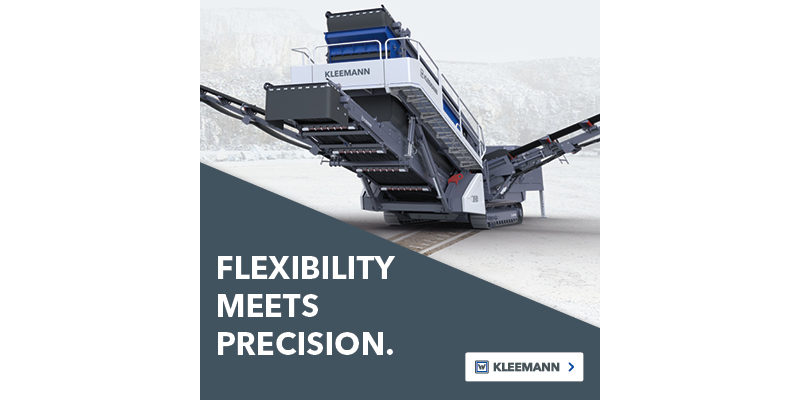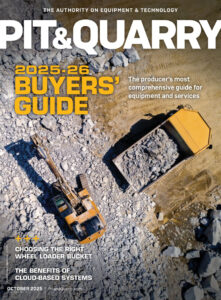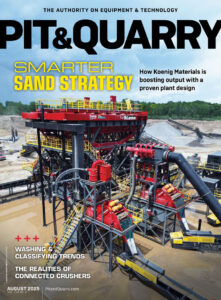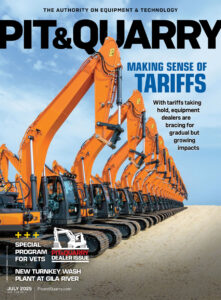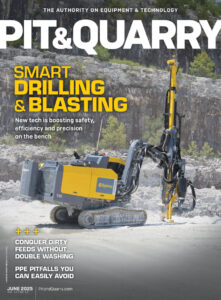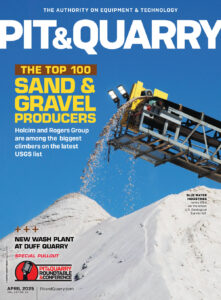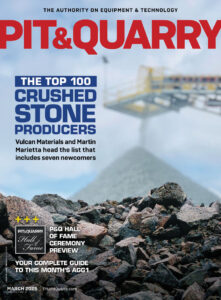As drilling and blasting technology evolves, so do opportunities to improve safety, efficiency and precision on the bench. Robert McClure, a longtime blast consultant and president of RAM Inc. (R.A. McClure Inc.), has been at the forefront of this evolution. He recently visited with P&Q to share his insights on the tools reshaping blast design, as well as what’s ahead for drill-and-blast operations.

P&Q: You’ve promoted a tech concept you refer to as ‘smart drilling.’ What elements specifically define this concept?
MCCLURE: We have always been on the forefront of technology related to blast optimization. The smart drill technology helps close some of the major gaps the industry struggled with in getting the blast design onto the bench with a high degree of accuracy.
Size and complexity of the blast, as well as uneven terrain, accessibility and weather conditions, were some of the challenges. With the use of advanced blast design software, the blast engineer now has the capability to fly the intended blast site with a drone, generate an accurate 3D model, incorporate the blast design and send it to the drill for accurate borehole placement.
P&Q: What production, efficiency and safety gains can be had from smart drilling?
MCCLURE: First and foremost, the safety gains and regulatory compliance are realized immediately when this technology is used to optimize a blast.
Accurate borehole placement and the use of ‘true minimum burden’ profiles for explosive loading helps maintain consistent explosive energy throughout the rock mass – even when rockface conditions are inconsistent. By accurately controlling the explosive energy, this will help maintain regulatory vibration levels and mitigate the potential for flyrock and excessive air overpressure.
On the production side, significant performance gains can be seen in fragmentation, wall control and maintaining grade and floor elevations. The combination of the blast design software and the smart drill provides the blast engineer with the capability to fly the blast area, design the blast pattern and send it to the drill for accurate borehole placement.
Post blast, the muckpile can be flown to look at fragmentation, volume, swell and movement. Progressive volumes could be obtained throughout the mucking process to cross reference throughput at the crusher. Having the on-site availability of these tools for blast analysis in one software package provides the blast engineer with significant capabilities to optimize their blasting program.
P&Q: What might be next on the smart drilling frontier?
MCCLURE: The next frontier is ‘measure while drilling’ (MWD), which is already underway. As the boreholes are being drilled, sensors pick up penetration rates and air flow, as well as other drilling-related information.
‘Measure while drilling’ logs this information, which is valuable to the blast engineer and provides a subsurface view of the borehole conditions. An example would be where the penetration rate of the drill would increase significantly, and a noticeable air loss occurs at the same time. This would indicate a soft seam or cavity that would provide the potential for overloading the blasthole, resulting in flyrock and excess air pressure.
P&Q: Let’s talk, too, about blast design software: How does the use of modern software contribute to better blasting? And how does a drill-and-blast operation effectively utilize smart drilling in tandem with blast design software?
MCCLURE: Blast design software such as BlastMetrix from Rockscience is the key to bringing this technology together. The software allows the blast engineer to seamlessly move data and ties together the drone, GPS survey points and the drill. To summarize, it allows the blast engineer to fly it, design it and conduct post-blast analysis.
For drillers, the software provides accurate collar location angle and azimuth of the borehole, as well as the exact depths needed to maintain grade. Any deviation in the field is updated in the model so when conditions require the driller to move the borehole due to poor conditions, it’s documented.
The other advantage of the smart drill package is that there is no need to do manual layout by putting markers on the bench. The driller is guided to the borehole location off the screen in the cab of the drill. This saves a tremendous amount of time in the field and eliminates the error of manual blast pattern layout.
For blasters, the software provides rockface profiles so they can determine exactly where the explosives need to be placed in the borehole to maintain confinement. The true minimum burden profiles show the distance from the borehole to the free face. When loading front-row holes with poor face conditions, the minimum burden profile provides the blaster with the 360-degree survey around that borehole – top to bottom.
P&Q: What other tools do you see as central to effective drilling and blasting in 2025?
MCCLURE: Advances in MWD technology. Being able to automatically generate a more detailed drill log will be extremely beneficial to the industry in safety, performance and compliance.
The other tools are drones and UAV systems to help work more efficiently. This technology has been a key game-changer for the industry.
P&Q: How is AI being integrated into drilling and blasting operations?
MCCLURE: AI is slowly evolving. It will be integrated more over time into drilling and blasting operations. Obviously, the big challenge here is the testing and verification of any AI to ensure safety.
P&Q: You’ve also promoted a concept you refer to as ‘smart loader’ tech. What is this, and how does it relate to what you describe as ‘smart drilling’?
MCCLURE: When we conduct blast audits, we often find major problems with floor control. Uneven floors cause wear and tear on equipment, but they also cause problems with blast performance and determining borehole depths.
Blast performance could suffer due to overdrilling. Overdrilled boreholes confine explosive charges, causing high vibrations while underdrilled boreholes create more floor problems. Both have significant negative costs associated with the overall blast.
The use of smart loader technology provides the operator with the grade elevations in the cab of the loader so adjustments could be made to maintain the proper grade. In the event a specific slope is needed for drainage, that can be input into the smart loader package so the operator can maintain the designed slope.
Maintaining proper grade elevations is critical so we can determine proper drill depths.
Related: Advancements in drilling, blasting equipment to explore

